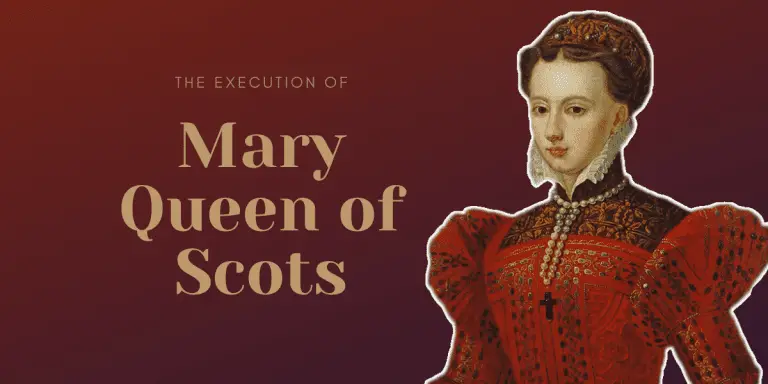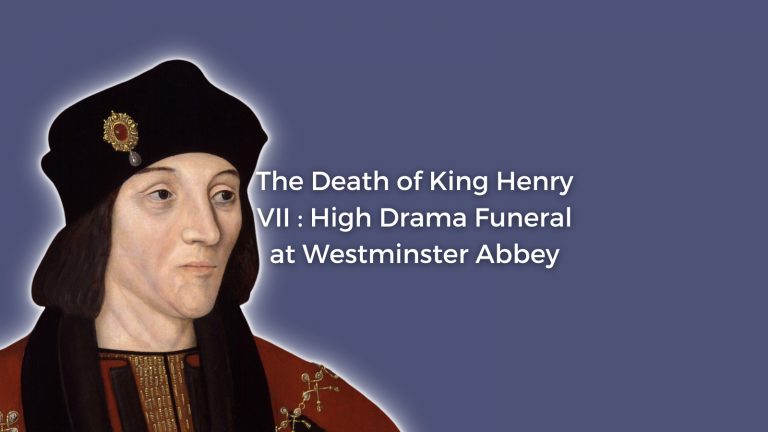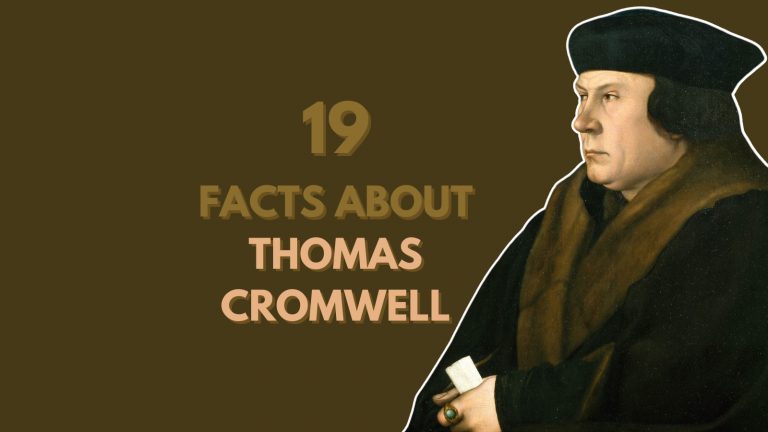Elizabeth of York: All your questions answered
Elizabeth of York was born on 11 February 1466 to become the first Tudor Queen and Queen of England as wife to King Henry VII, from 18 January 1486 until her death in 1503. Elizabeth is the only woman ever to be daughter, sister, niece, wife, and mother to a King. She and Henry wed after his victory at the Battle of Bosworth Field, which culminated at the end of the War of the Roses. She bore seven children with Henry.
[/et_pb_text][/et_pb_column][/et_pb_row][et_pb_row _builder_version=”4.15.0″ _module_preset=”default” global_colors_info=”{}”][et_pb_column type=”4_4″ _builder_version=”4.15.0″ _module_preset=”default” global_colors_info=”{}”][et_pb_text _builder_version=”4.15.0″ _module_preset=”default” global_colors_info=”{}”]Elizabeth of York’s Parents
[/et_pb_text][/et_pb_column][/et_pb_row][et_pb_row _builder_version=”4.15.0″ _module_preset=”default” column_structure=”1_4,1_4,1_4,1_4″ min_height=”58px”][et_pb_column _builder_version=”4.15.0″ _module_preset=”default” type=”1_4″][/et_pb_column][et_pb_column _builder_version=”4.15.0″ _module_preset=”default” type=”1_4″][et_pb_image src=”http://historywithhenry.com/wp-content/uploads/2022/04/Edward_IV_Father_of_Elizabeth_of_York_cropped.jpg” _builder_version=”4.15.0″ _module_preset=”default” title_text=”Edward_IV,_Father_of_Elizabeth_of_York_(cropped)” hover_enabled=”0″ sticky_enabled=”0″ width=”74%” align=”right”][/et_pb_image][/et_pb_column][et_pb_column _builder_version=”4.15.0″ _module_preset=”default” type=”1_4″][et_pb_image src=”http://historywithhenry.com/wp-content/uploads/2022/04/ElizabethWoodville.jpeg” _builder_version=”4.15.0″ _module_preset=”default” title_text=”ElizabethWoodville” hover_enabled=”0″ sticky_enabled=”0″ custom_margin=”||60px|||” max_width=”100%” width=”97%”][/et_pb_image][/et_pb_column][et_pb_column _builder_version=”4.15.0″ _module_preset=”default” type=”1_4″][/et_pb_column][/et_pb_row][et_pb_row _builder_version=”4.15.0″ _module_preset=”default” global_colors_info=”{}” min_height=”167.1px”][et_pb_column type=”4_4″ _builder_version=”4.15.0″ _module_preset=”default” global_colors_info=”{}”][et_pb_text _builder_version=”4.15.0″ _module_preset=”default” global_colors_info=”{}”]Edward IV and Elizabeth Woodville were her parents, and they were secretly married, undeniably for love. Elizabeth Woodville was widowed at the time and Edward was alienated by his supporters due to his marriage. Edward took the throne by force after defeating Henry VI’s supporters in what was to be known as the thirty years ‘Wars of the Roses’. These were a series of battles between the Houses of York and Lancaster. The couple was blessed with ten children, the first three were daughters, the first of whom was Elizabeth. Of course, the new royal family was desperate for a son and heir, and indeed produced three boys, none of whom were destined to wear the crown.
[/et_pb_text][/et_pb_column][/et_pb_row][et_pb_row _builder_version=”4.15.0″ _module_preset=”default” global_colors_info=”{}” min_height=”43.9px”][et_pb_column type=”4_4″ _builder_version=”4.15.0″ _module_preset=”default” global_colors_info=”{}”][et_pb_text _builder_version=”4.15.0″ _module_preset=”default” global_colors_info=”{}”]Elizabeth of York’s Siblings
[/et_pb_text][/et_pb_column][/et_pb_row][et_pb_row _builder_version=”4.15.0″ _module_preset=”default” global_colors_info=”{}”][et_pb_column type=”4_4″ _builder_version=”4.15.0″ _module_preset=”default” global_colors_info=”{}”][et_pb_text _builder_version=”4.15.0″ _module_preset=”default” global_colors_info=”{}”]Elizabeth of York had six sisters of whom five survived, Mary, Cecily, Anne, Catherine, and Bridget, with Margaret succumbing as an infant in 1472. When their father died in 1483, their uncle, Richard III, took the English throne, declared the York children illegitimate, and took two of Elizabeth’s young brothers captive. The supposition that they were murdered has never been proved. Elizabeth and her mother and sisters took refuge in Westminster Abbey, reclaiming their status as respected nobility only in 1485, once Richard III was dead.
Mary of York was born in 1467, named a Lady of the Garter in 1480, and died two years later in 1482 as a spinster without children. It is assumed that she lived her short life at court with Elizabeth.
Cecily of York, born in 1469, died in 1507 lived most of her life at court to become First Lady of the Bedchamber once her sister became Queen. As the holder of this title, she participated in court ceremonies, the most conspicuous being Elizabeth’s coronation and the christenings of her nephews. Her first of three marriages was an arranged union with the future King James IV of Scotland. Her marriage to Lancastrian noble Viscount John Welles produced two daughters.
Anne of York, born in 1475, died in 1511 also held prominence in Elizabeth of York’s court. She succeeded Cecily as First Lady of the Bedchamber in 1487 after Cecily married John Welles. Anne’s childhood betrothal to Duke Philip of Burgundy did not see the light of day following her father’s death. She went on to marry Thomas Howard, Duke of Norfolk, thereby allying the royal family and the prestigious Howards.
Catherine of York, born in 1479 and living until 1527 was the least prominent at the court of her sisters. She served as the chief mourner at Elizabeth’s funeral in 1503. Catherine enjoyed a few failed betrothals to successfully marry William Courtenay, Earl of Devon. He was later charged with treason against the crown.
Bridget of York was the youngest of Elizabeth’s surviving sisters, born in 1480 and living until 1507. She took up life as a nun, having been sent to Dartford Priory by her mother when she was just ten. She was probably well educated and took her vows at the age of thirteen. Since she very seldom left the nunnery, not much is known about her life.
The Princes in the Tower were the older of Elizabeth’s brothers, the deposed King Edward V of England and Richard of Shrewsbury, Duke of York. They were the only sons of King Edward IV and Elizabeth Woodville to survive their father’s death in 1483. They were held prisoner by their paternal uncle, the Duke of Gloucester, when they were just 12 and 9 years old, respectively, in the Tower of London. Gloucester took the throne as Richard III after the two brothers were declared illegitimate and Edward V’s anticipated coronation was never to be.
The supposition is that Richard has the young boys killed in the Tower to secure his hold on the crown. Going by their last recorded sighting in the tower, it is assumed through circumstantial evidence that they were murdered sometime in 1483. Other rumours surrounding their fate are that died either by the hand of their maternal uncle, the Duke of Buckingham, or future brother-in-law King Henry VII. Many suggest that the boys escaped assassination. There have been those who claimed to be the princes in the Tower over the years that followed but none were ever substantiated.
During work on the Tower in 1674, workmen unearthed a wooden box from under the staircase in which were two small human skeletons. It was popularly believed that these were the remains of the princes, but this was never satisfactorily proved. King Charles II saw to it that the bones were laid to rest in Westminster Abbey.
[/et_pb_text][/et_pb_column][/et_pb_row][et_pb_row _builder_version=”4.15.0″ _module_preset=”default” global_colors_info=”{}”][et_pb_column type=”4_4″ _builder_version=”4.15.0″ _module_preset=”default” global_colors_info=”{}”][et_pb_text _builder_version=”4.15.0″ _module_preset=”default” global_colors_info=”{}”]Elizabeth of York and Richard III
[/et_pb_text][/et_pb_column][/et_pb_row][et_pb_row column_structure=”1_5,3_5,1_5″ _builder_version=”4.15.0″ _module_preset=”default” global_colors_info=”{}”][et_pb_column type=”1_5″ _builder_version=”4.15.0″ _module_preset=”default” global_colors_info=”{}”][/et_pb_column][et_pb_column type=”3_5″ _builder_version=”4.15.0″ _module_preset=”default” global_colors_info=”{}”][et_pb_image src=”http://historywithhenry.com/wp-content/uploads/2022/03/1-12.png” alt=”Elizabeth of York” title_text=”1″ _builder_version=”4.15.0″ _module_preset=”default” global_colors_info=”{}”][/et_pb_image][/et_pb_column][et_pb_column type=”1_5″ _builder_version=”4.15.0″ _module_preset=”default” global_colors_info=”{}”][/et_pb_column][/et_pb_row][et_pb_row _builder_version=”4.15.0″ _module_preset=”default” global_colors_info=”{}”][et_pb_column type=”4_4″ _builder_version=”4.15.0″ _module_preset=”default” global_colors_info=”{}”][et_pb_text _builder_version=”4.15.0″ _module_preset=”default” global_colors_info=”{}”]As firstborn to Edward IV and Elizabeth Woodville, Elizabeth of York became one of the most beautiful women in the country and a prize for marriage. As a child, she was promised marriage to the Dauphin of France but this was not to be. Richard III was Elizabeth’s paternal uncle but this did not stop him from contemplating marrying her. This contemplation was thwarted in 1485 when Henry Tudor and his army from France defeated Richard at the Battle of Bosworth. Henry intended to marry Elizabeth as the heir to the House of Lancaster. Richard is rumoured to have poisoned his wife Anne when she died suddenly and this caused him to publicly announce that he had no intention of marrying his niece. While it is not known for sure that Richard and Elizabeth had an actual affair, a missing letter from Elizabeth to her uncle suggests her hope that the Duke of Norfolk might promote the marriage as she was ‘his heart and soul and all’.
[/et_pb_text][/et_pb_column][/et_pb_row][et_pb_row _builder_version=”4.15.0″ _module_preset=”default” global_colors_info=”{}”][et_pb_column type=”4_4″ _builder_version=”4.15.0″ _module_preset=”default” global_colors_info=”{}”][et_pb_text _builder_version=”4.15.0″ _module_preset=”default” global_colors_info=”{}”]Why did Henry VII Want to Marry Elizabeth of York?
[/et_pb_text][/et_pb_column][/et_pb_row][et_pb_row _builder_version=”4.15.0″ _module_preset=”default” global_colors_info=”{}”][et_pb_column type=”4_4″ _builder_version=”4.15.0″ _module_preset=”default” global_colors_info=”{}”][et_pb_text _builder_version=”4.15.0″ _module_preset=”default” global_colors_info=”{}”]By promising to marry Elizabeth of York before the battle of Bosworth, Henry cemented support from the Yorkists. Any reneging on this placation would have led to a major rebellion. Their marriage unified the two rivalling factions involved in the War of the Roses over 30 years and garnered much support among the people yearning for stability. Their marriage also put a Yorkist on the throne as Elizabeth of York was already a queen. Through marriage, Henry Tudor suppressed Elizabeth’s strong claim to the throne and any threat she might have posed as the heir to the Yorkist throne which would have made the Tudor dynasty vulnerable. Elizabeth of York’s inherent power as the daughter of King Edward IV consolidated all the better the authority of the throne, strengthening the joint dynasty she had with Henry Tudor’s. Henry did strategically marry Elizabeth two years after his own coronation to prove his right to the throne as an individual and not as her husband. Their children would have all the stronger claim to the throne with royal blood on both sides of the family.
[/et_pb_text][/et_pb_column][/et_pb_row][et_pb_row _builder_version=”4.15.0″ _module_preset=”default” global_colors_info=”{}”][et_pb_column type=”4_4″ _builder_version=”4.15.0″ _module_preset=”default” global_colors_info=”{}”][et_pb_text _builder_version=”4.15.0″ _module_preset=”default” global_colors_info=”{}”]Elizabeth of York’s Children
[/et_pb_text][/et_pb_column][/et_pb_row][et_pb_row column_structure=”1_5,3_5,1_5″ _builder_version=”4.15.0″ _module_preset=”default” global_colors_info=”{}”][et_pb_column type=”1_5″ _builder_version=”4.15.0″ _module_preset=”default” global_colors_info=”{}”][/et_pb_column][et_pb_column type=”3_5″ _builder_version=”4.15.0″ _module_preset=”default” global_colors_info=”{}”][et_pb_image src=”http://historywithhenry.com/wp-content/uploads/2022/03/2-12.jpg” alt=”Elizabeth of York” title_text=”2″ _builder_version=”4.15.0″ _module_preset=”default” global_colors_info=”{}”][/et_pb_image][/et_pb_column][et_pb_column type=”1_5″ _builder_version=”4.15.0″ _module_preset=”default” global_colors_info=”{}”][/et_pb_column][/et_pb_row][et_pb_row _builder_version=”4.15.0″ _module_preset=”default” global_colors_info=”{}”][et_pb_column type=”4_4″ _builder_version=”4.15.0″ _module_preset=”default” global_colors_info=”{}”][et_pb_text _builder_version=”4.15.0″ _module_preset=”default” global_colors_info=”{}”]Arthur, Prince of Wales was born to Elizabeth on 20 September 1486 to be first in line to the throne. He died at Ludlow Castle on the Welsh border on 2nd April 1502, either from the sweating sickness, consumption, or tuberculosis shortly after marrying Catherine of Aragon.
Margaret, Queen of Scotland was born on 28 November 1489. As Princess Margaret Tudor of England, she married King James IV of Scotland in Holyrood Abbey on 8 August 1503. As Queen of Scots, she produced the heir to the Scottish throne with the birth of a son, King James V. Before she died on 18 October 1541, she married again twice. Similar to her ill-fated granddaughter, Mary, Queen of Scots, Margaret’s choice of husband threatened her status as queen.
Henry VIII, born 28 June 1491, was King of England from 22 April 1509 until his death on 28 January 1547. He is undeniably best known for all he did to annul the first of his six marriages.
Elizabeth Tudor was born on 2 July 1492 and died of atrophy shortly after on 14 September 1495, six months before her sister Mary was born. She was buried in Westminster Abbey.
Mary, Queen of France was born Mary Tudor on 18 March 1496 to King Henry VII and Elizabeth of York, their third daughter and fifth child. As an English princess, she was briefly queen of France and the third wife of Louis XII of France, who was more than 30 years her senior. As Louis’s widow, she married Charles Brandon, 1st Duke of Suffolk. She died on 25 June 1533.
Edmund was born in 1499 and died on 19 June 1500 at 15 months of unknown causes, and was buried at Westminster Abbey.
Katherine was born and died in 1503, just days old.
[/et_pb_text][/et_pb_column][/et_pb_row][et_pb_row _builder_version=”4.15.0″ _module_preset=”default” global_colors_info=”{}”][et_pb_column type=”4_4″ _builder_version=”4.15.0″ _module_preset=”default” global_colors_info=”{}”][et_pb_text _builder_version=”4.15.0″ _module_preset=”default” global_colors_info=”{}”]Did She Teach Henry VIII to Write?
[/et_pb_text][/et_pb_column][/et_pb_row][et_pb_row _builder_version=”4.15.0″ _module_preset=”default” global_colors_info=”{}”][et_pb_column type=”4_4″ _builder_version=”4.15.0″ _module_preset=”default” global_colors_info=”{}”][et_pb_text _builder_version=”4.15.0″ _module_preset=”default” global_colors_info=”{}”]Henry VII and Elizabeth insisted on the best education for their children. The programme designed for Elizabeth’s brothers was used as a model for educating Prince Arthur. His curriculum was classical involving such poets as Bernard André and John Skelton, the prince was significantly influenced by Desiderius Erasmus and Thomas More. Despite this influence, he was taught to read and write by his mother. This was obviated when on the 2nd of November 1495, when Henry VIII was only four and a half, he paid £1 ‘for a book bought for my Lord of York’, with never a mention of a formally appointed tutor. Going by the similarity of his handwriting to that of his sister, and dissimilar to his known teachers, it is assumed that Elizabeth taught her children to write. And why not, since Elizabeth’s own education was remarkable for a fifteenth-century woman.
[/et_pb_text][/et_pb_column][/et_pb_row][et_pb_row _builder_version=”4.15.0″ _module_preset=”default” global_colors_info=”{}”][et_pb_column type=”4_4″ _builder_version=”4.15.0″ _module_preset=”default” global_colors_info=”{}”][et_pb_text _builder_version=”4.15.0″ _module_preset=”default” global_colors_info=”{}”]Elizabeth of York Dies
[/et_pb_text][/et_pb_column][/et_pb_row][et_pb_row column_structure=”1_5,3_5,1_5″ _builder_version=”4.15.0″ _module_preset=”default” global_colors_info=”{}”][et_pb_column type=”1_5″ _builder_version=”4.15.0″ _module_preset=”default” global_colors_info=”{}”][/et_pb_column][et_pb_column type=”3_5″ _builder_version=”4.15.0″ _module_preset=”default” global_colors_info=”{}”][et_pb_image src=”http://historywithhenry.com/wp-content/uploads/2022/03/3-12.jpg” alt=”Elizabeth of York” title_text=”3″ _builder_version=”4.15.0″ _module_preset=”default” global_colors_info=”{}”][/et_pb_image][/et_pb_column][et_pb_column type=”1_5″ _builder_version=”4.15.0″ _module_preset=”default” global_colors_info=”{}”][/et_pb_column][/et_pb_row][et_pb_row _builder_version=”4.15.0″ _module_preset=”default” global_colors_info=”{}”][et_pb_column type=”4_4″ _builder_version=”4.15.0″ _module_preset=”default” global_colors_info=”{}”][et_pb_text _builder_version=”4.15.0″ _module_preset=”default” global_colors_info=”{}”]Elizabeth of York spent the better part of 1502 pregnant in the Tower of London. She gave birth to a daughter, Catherine, on 2 February 1503. The baby survived only a few days and Elizabeth followed on her own 37th birthday, on 11 February, succumbing to a postpartum infection.
[/et_pb_text][/et_pb_column][/et_pb_row][et_pb_row _builder_version=”4.15.0″ _module_preset=”default” global_colors_info=”{}”][et_pb_column type=”4_4″ _builder_version=”4.15.0″ _module_preset=”default” global_colors_info=”{}”][et_pb_text _builder_version=”4.15.0″ _module_preset=”default” global_colors_info=”{}”]Where Is Elizabeth of York Buried?
[/et_pb_text][/et_pb_column][/et_pb_row][et_pb_row _builder_version=”4.15.0″ _module_preset=”default” global_colors_info=”{}”][et_pb_column type=”4_4″ _builder_version=”4.15.0″ _module_preset=”default” global_colors_info=”{}”][et_pb_text _builder_version=”4.15.0″ _module_preset=”default” global_colors_info=”{}”]Elizabeth lies beside Henry VII in a vault beneath his magnificent tomb in the Lady Chapel. The couple is the first monarchs to be buried in the Abbey in a vault under the floor rather than in a tomb chest above ground.
[/et_pb_text][/et_pb_column][/et_pb_row][/et_pb_section]





